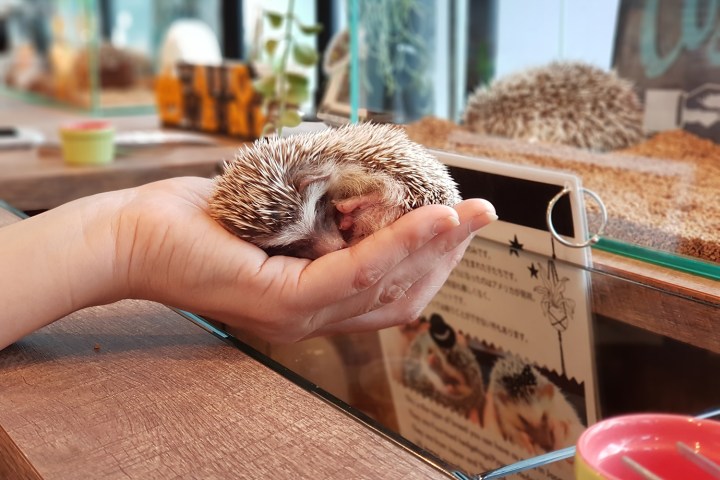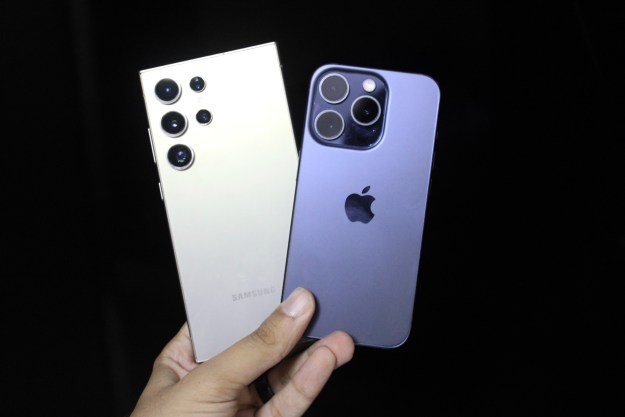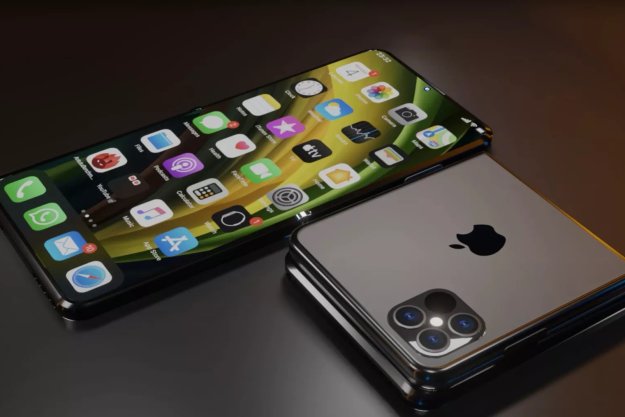
Whether it’s robots or smartphones, AI or premium audio products, Japan has always been at the forefront of any conversation about technology. We recently spent several weeks in Tokyo discovering not only what some of the biggest names in new tech are creating, but also taking advantage of the exciting location to test out the best smartphone cameras, and discover the charm of its popular tech-tourism destinations. Make sure to check out other entries in our series “Modern Japan.”
The dual-lens camera is the defining feature of the Apple iPhone 8 Plus and the Samsung Galaxy Note 8, with both creating blurred background effects to your photos. Samsung calls this feature Live Focus, while Apple calls it Portrait Mode. Different names for essentially the same feature; but you’ll find quite a few differences between the two when you use them.
The cute little critters are covered in spikes, which are perfect for confusing the camera.
While ideally suited for taking pictures of people, they’re equally suited to taking pictures of other things, creating that striking look of an object isolated in the foreground of the image. The question is, how effective are these features, how do they stack up against each other, and what are their strengths and weaknesses?
To find out, we went to Harry’s Hedgehog Café in Tokyo, Japan. That’s right, a hedgehog café, where you get to spend time with cute pygmy hedgehogs while enjoying a cup of coffee. Why choose a hedgehog café? The cute little critters are covered in spikes, which are perfect for confusing the camera about what to blur out, and what not to blur out. Publishing cute pictures of hedgehogs (and rabbits) is just a happy coincidence.
If you want to see more camera comparisons, check out our smartphone camera shootout series. Comment below to let us know what camera shootouts you want to see next!
Hands and hedgehogs
Look at the pictures of a hedgehog cupped in two hands. Both were shot within moments of each other, and in exactly the same position, with exactly the same lighting conditions. While both images look great, the Galaxy Note 8 performs better here. Let’s examine why. Take a look at the hedgehog’s spikes, which are better defined and more effectively picked out against the background.
- 1. Galaxy Note 8
- 2. iPhone 8 Plus
- 3. Galaxy Note 8
- 4. iPhone 8 Plus
On the iPhone, the spikes have a halo around each one, or each clump of spikes. On the Galaxy Note 8, the individual spikes are much clearer, giving the hedgehog its iconic prickly look. The hands holding the hedgehog are also more in focus, where on the iPhone the upper fingers have been incorporated into the blurred background. Neither case here is right or wrong, but the Note 8’s picture looks more realistic.
The better cameras perform in the café, the better they will do in everyday life.
But the iPhone 8 Plus has warmer, more natural colors, and the picture is easier on the eyes. If you don’t zoom in, it’s a beautiful image. The Note 8’s picture is technically superior, and even when you manually adjust the blur intensity in the gallery, it still doesn’t turn the spikes into a blurry clump.
Obviously very few of us will regularly take pictures of hedgehogs. But it’s important for Live Focus or Portrait Mode to pick out hair, clothes, glasses, hands, fingers, or any other individual part of an image. The better cameras perform in this café, the better they will do in everyday life. We’d say the Galaxy Note 8 edges ahead of the iPhone when placed under scrutiny.
Rabbits and ears
While the hedgehogs went back to sleeping, we moved our attention to the rabbits also at the café. Like the spiky hedgehogs, rabbit ears are an excellent test of the portrait mode software; but the rabbits were considerably more active than the hedgehogs, making taking the same picture with two different cameras more challenging. By the time we picked up the second phone, the rabbit shifted its position. While direct comparisons weren’t possible, we can still see differences between the iPhone 8 Plus and the Galaxy Note 8.
- 1. Galaxy Note 8
- 2. iPhone 8 Plus
In the iPhone picture with the rabbit against two different backgrounds — a close-up sweater and a further away wall — the camera distinguishes between the two well, but there is a strong line effect around the face. The further away ear is also blurred at the tip. However, the fur is well defined, and the picture turns out well. The same cutout effect is also seen on the photo with the rabbit on a lap, where a complex background makes separating rabbit from clothing quite difficult. Sharpness is affected on the rabbit’s nose too. These things aside, we really like the pictures from the iPhone.
The Note 8 took a different approach for its picture of the rabbit on a lap. It chose to keep the clothing and the person mostly in focus, and blur out things in the background. It doesn’t isolate the rabbit in the same way; but this means the fur and ears are still quite defined, and the final picture is less about just the rabbit, and more about the rabbit and the person it’s sitting on together. It’s a more realistic photo than the one taken by the iPhone.
Close up and at a distance
The Galaxy Note 8 and the iPhone 8 Plus took very different portrait shots in the hedgehog café, but there is one key difference that’s only noticeable when you use the two cameras back-to-back. It’s shooting distance. The iPhone 8 Plus’s Portrait mode lets you get in close to the subject, really emphasising it suspended in blurry space. It makes for striking, visually exciting pictures.
- 1. Galaxy Note 8
- 2. iPhone 8 Plus
Samsung’s camera doesn’t work as close as the iPhone, perhaps doubling the minimum distance between subject and camera. It’s immediately obvious in many of the pictures here. We moved in with the iPhone, but had to move right back with the Note 8 to prompt Live Focus’ activation. It’s possible this greater shooting distance is the reason we don’t see such heavy software blurring around the edges of the subject.
The Galaxy Note 8 took bokeh photos we preferred.
The Note 8 has a smaller window where Live Focus operates than Portrait Mode on the iPhone generally. We could pull back further with the iPhone, although Portrait Mode’s different lighting effects wouldn’t work if we were too far away, despite the camera telling us Portrait Mode was active and the background blurring. The Note 8 prefers to shoot wider Live Focus pictures than the iPhone. We took more Live Focus pictures of larger objects in a bigger amount of space with the Note 8, than we did with Portrait Mode on the iPhone. However, for smaller objects in close up, like food and hedgehogs, we reached for the iPhone.
Which is best?
Both the Galaxy Note 8 and the iPhone 8 Plus are excellent camera phones, and you’ll be happy with shots taken on either. In our time using both, the Galaxy Note 8 took bokeh photos we preferred in a greater amount of circumstances, and rarely did we need to choose the iPhone over the Note 8. For those close up bokeh shots that are easier on the iPhone, we usually just cropped the Note 8’s images to tighten up the photo, so we didn’t really find the smaller window of use restrictive.
The Note 8 is the first major Galaxy phone to have a dual-lens camera, and it’s a real winner. If it had been on the Galaxy S8, then we’d have preferred it even more, because the Note 8 as a phone is too large and uncomfortable. The iPhone 8 Plus is big too, but it’s easier to hold than the Note 8, and it trounces Samsung’s phone when it comes to battery life.
Samsung’s excellent dual-lens camera makes us excited for the Galaxy S9, and hopeful that Samsung will add a similar system to a more useable everyday device.
Editors' Recommendations
- 5 phones you should buy instead of the iPhone 15
- This is our best look yet at the iPhone 16’s big design changes
- 5 phones you should buy instead of the iPhone 15 Pro Max
- 8 iPhone browser apps you should use instead of Safari
- Watch an acclaimed director use the iPhone 15 Pro to shoot a movie












